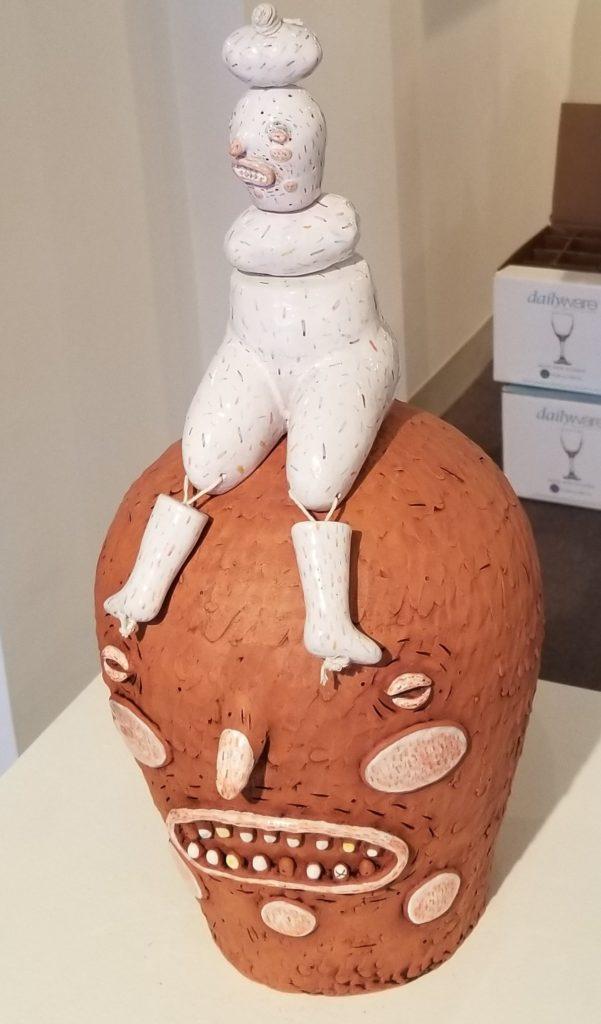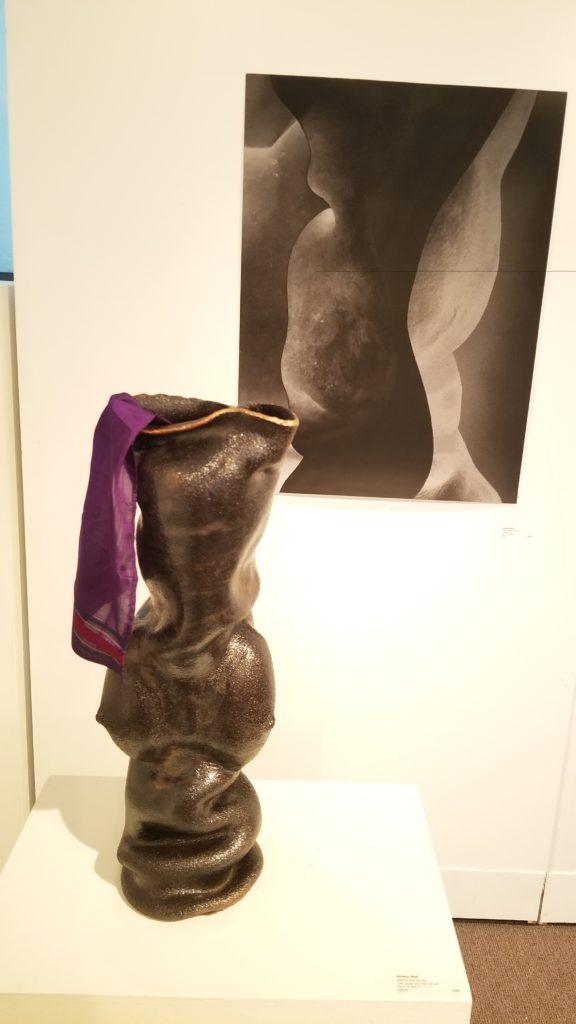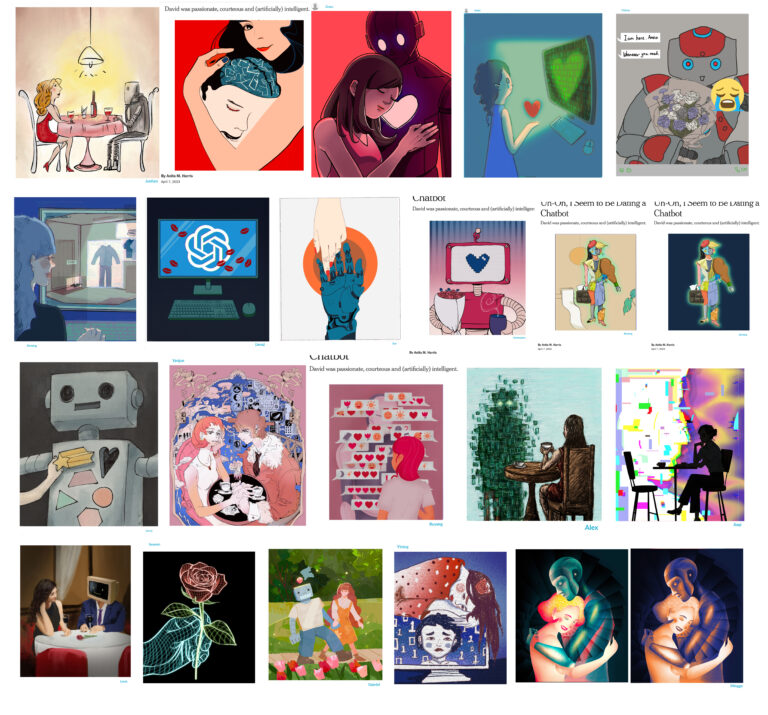
Lucy Lacoste

At first, I thought I’d write about how surprised visitors to wealthy, traditional, suburban Concord, MA, would be to find a small ceramics gallery, owned by a petite blonde woman from Mississippi, showcasing the work of Black, East Asian, Hispanic, and other artists of color. But, of course, Concord is often considered the birthplace of the American Revolution and is, thus, the perfect place to bring the provocative, transformational work of talented artists from across the US to public attention.

As owner Lucy Lacoste explains, “The exhibition brings together artists of color … in response to the racial injustices that, while always present, have been brought to wider awareness by the protests after George Floyd’s murder.
“As a gallery, we want to expand our platform to include greater diversity in artists and content to more fully represent this new reality. Art is a reflection of culture and history; thus, we want to show the art of those with lived experiences who are leading the way to human rights for all.”
This is not the first time the Lacoste Gallery has promoted social justice; Lacoste and ceramicist Lily Fein recently donated 18 per cent of profits from Fein’s recent show to the Black Lives Matter movement, and the gallery has frequently shown the work of artists from diverse backgrounds. But the current exhibit is unusual in that it features eight artists expressing the need for social justice–each from a unique and powerful personal perspective.
Natalia Arbelaez

Natalia Arbelez, 2018-19 Artist in Residence at Harvard, was born in Miami, spent the first four years in her mother’s country of Colombia, Medellin, before returning to the US–quickly learning English and forgetting Spanish within a month. Throughout her life, she writes, she has questioned her identity and felt a sense of loss.
Her work, concerned with an “essence” of the body, “fills that loss,” by allowing her to reconnect with her heritage–as she researches and preserves Latin American and Ameridian culture, people and identities lost through conquest, migration, and time –and gained through family, culture, exploration, and passed down through tradition and genetic memory…
“In my process of referencing the body, I have forgone the use of an actual and specific body.” Thus, “I can use the memory of my own body, the body of my family and ancestors to extend my memories to places beyond the body. I use these influences to contribute to a contemporary dialogue while simultaneously continuing the work of my ancestors. There has been so much loss and stigma of these communities that it is important to me that my work celebrates and honors them.”

Ashwini Bhat
Ashwini Bhat, born in Southern India,and now based in California, has an MA in literature and had an earlier career in Indian dance. She doesn’t say this, but to me, her work embodies twists and turns of such dance…and perhaps even of Indian sari’s. As her artist’s statement explains, “During shelter-in-place, I turned both inward and toward the world. This has been an intense time for self-reflection, for questioning my own identity as well as my identification with others and with nature, the world. These new sculptures reveal that focus on the alliance of inscapes and landscapes.”
Paul S. Briggs

The work of Paul S. Briggs, originally from New York State, to me looked like thick black iron prison bars, surrounded and locked with chains. Briggs, now Artist in Residence at 5the Harvard Ceramics Program and Associate Professor at Mass College of Art, writes: “This work is neither gendered nor is it about race, it does not respect person. Formally, it is using metaphor and metonymy. To be doubled up inside, tied in knots, feeling tight all over, is how many describe the everyday tension of existence in a society seized by pandemic and strivings to wake up from history and create a more just and loving society, the beloved community. The wounded, broken, pierced and knotted vessels have a presence of dignity and a certitude.”

Gerald Brown
Gerald Brown, a Chicago Southside native, currently teaches in Philadelphia. Her “sacred objects’ primary spiritual function is to demarcate space for ancestral as well as descendants of Strange Fruit, an expansive lineage of African Diasporic people in America.” Brown writes: “The forms possess the power to communicate ancestral blessings such as energy, memory, forgiveness and love, providing an opportunity for multi-layered healing personally as well as environmentally. These abstract portraits of Strange Fruit commemorate a range of subjects and their unique, complicated behaviors developed through resisting anti-Blackness. In the midst of survival, deadly environmental effects plague these inhabitants, causing a long-term development of various anti-Black tendencies. However, by creating these intimate moments to honestly learn from our past selves as well as provide guidance for moving forward, these forms become a beacon of solace in the face of violence.
The spiritual function of the sacred objects are activated through the choice of material and approach to construction. Action and touch carry energy, while clay records movement and memory. The way the marks are
made deeply affect the commemoration as well as the overall spiritual tactility function….There are a few adornments or appendages that are added to accentuate the form, but the work is primarily mirrored externally as internally to deliberately communicate the continuity between the spaces. Similarly, the improvisational, voluptuous contours also forge a sense of harmony between the observer and the Fruit, reflecting the natural duality between tumultuous chaos and intrinsic beauty, a core pillar of the Black experience. These dual energies flowlike water through the sacred objects, are transmitted through touch and absorbed by the recipient, rejuvenating inherited ancestral traumas and internalized anguish.
Aaron Caldwell

Aaron Caldwell, born and raised in Fresno, CA, is currently a graduate student at Illinois State University. As an artist, he is “interested in looking at Black and queer identity with a lens of interiority. [His] work is primarily inspired by Black folks’ history with moisturizing products for the hair and body, and my being conditioned to hold value in my hair, skin color and the necessary tools for care. Being considered physically ashy (white and dry skin) or socially ashy (wack, lame, ignorant) are lingo among Black folk.
“As a result, products like lotion or coconut oil have become a staple in the Black community, so I create objects that concretely elevate and highlight this relationship unique to Black culture. I also employ zoomorphic forms inspired by folktales and west and central african sculpture. The buffalo represents masculinity and manhood, the sheep represents queerness and the rabbit represents Blackness. My art narrates how I engage with my Blackness and queerness in private, through culture, and how these identities inform how I engage with the world.”
Renata Cassiano-Alvarez

Renata Cassiano-Alvarez, a Mexican-Italian artist born in Mexico City and now teaching at the University of Arkansas, works primarily in clay but a background in painting and drawing informs her practice–which makes stunning use of glazes.
She writes: “As a bi-cultural artist (Mexico/Italy), I have been preoccupied with the effects language has on the body and how to translate this phenomenon to process. This delving has led me to seek the transformation of the historical role ceramic materials have in the ceramic process. When this role is changed, it is possible to realize a physical metamorphosis of the elements. At the center, I am teaching ceramic glaze a new language. A material that historically has been relegated to surface decoration is able is able to become the structure of the sculpture itself by ways of casting. The result is a material with a new sentience, an outcome that does not resemble glaze as we traditionally know it, but rather a new vision with an expanded concept of possibility.
My sculptures reference the body and its contents and seek to give the transformation itself a physicality. In a way, I act as an archeologist to my own practice. I cut, excavate and carve the sculptures until I find what they are trying to tell me… Clay speaks many languages and keeps infinite possibilities. What I look for is for my sculptures to embody, become icons of freedom and force.

Sydnie Jimez
Sydnie Jimenez, born in Orlando Florida , ia a recent graduate of the School of the Art Institute of Chicago. She spent much of her childhood in Georgia as a “non-white-presenting person. “Growing up with the white side of her family, she was only reunited with the Dominican side of her family in adolescence. Most of her work , she writes, “is inadvertently informed by a feeling of cultural dysphoria. ” With her sculptures, she tries “to invoke a sense of familiarity and security within community while expressing a suspicion, frustration and/or anger toward societal ideals rooted in white supremacy and European colonization.”
The figures in the current show “were made during the peak of quarantine during the COVID-19 pandemic at the same time as protests by black and brown youth that were sparked by police brutality and the deaths of black people by police including the murder of Breonna Taylor, Elijah McClain, and George Floyd to name a few. These figures are referencing protestors, protest, and a feeling of discontent, disorientation, and unease left in the wake of these deaths whose murderers were not brought to justice.”
Anthony Kascak

Anthony Kascak, has an MFA from the University of Arkansas School of art and BFA’s in art practices and psychologiy from the University of Colorado, Boulder. The Lacoste exhibit includes two wall pieces from his
MFA thesis show, and a wall piece made shortly after that. “I am interested in exploring how I can incorporate photography into my ceramics practice; I have done this directly through photographic decals as well as with physical touch and visual perception through ceramic frames and fragments,” he writes.
“These ceramic frames contain images and actions: fingerprints preserved and highlighted with glaze, photographic ceramic decals of my body, as well as adorned shards and cracks of ceramic pieces that highlight the fragility of the ceramic process and specific details of photographs. The physical touch involved in the ceramic process not only emphasizes the marks made to reference the literal act of touching, but also the vulnerability and potential of the material itself.”
*
I wish that, in this post, I could do justice to the brilliance of the exhibit…but it’s well- worth a visit to the gallery to experience the profound ideas and emotions it evokes. The ceramic pieces, writeups and the show as a whole serve as a transformational bridge from our individual and collective pasts– inspiring what I hope will be a universally shared, just and creative future.
Empowering Voices will be on view at Lacoste Gallery, 25 Main St. in Concord, MA until October 10, 2020.
–Anita M. Harris
Anita Harris is a writer, photographer and communications consultant based in Cambridge, MA.
New Cambridge Observer is a publication of the Harris Communications Group, also in Cambridge.




